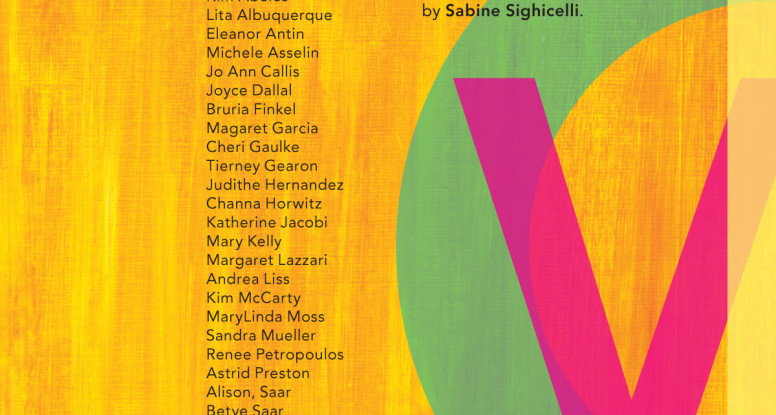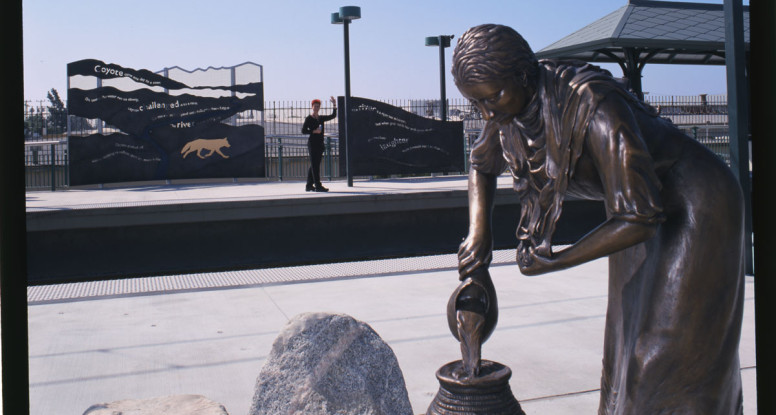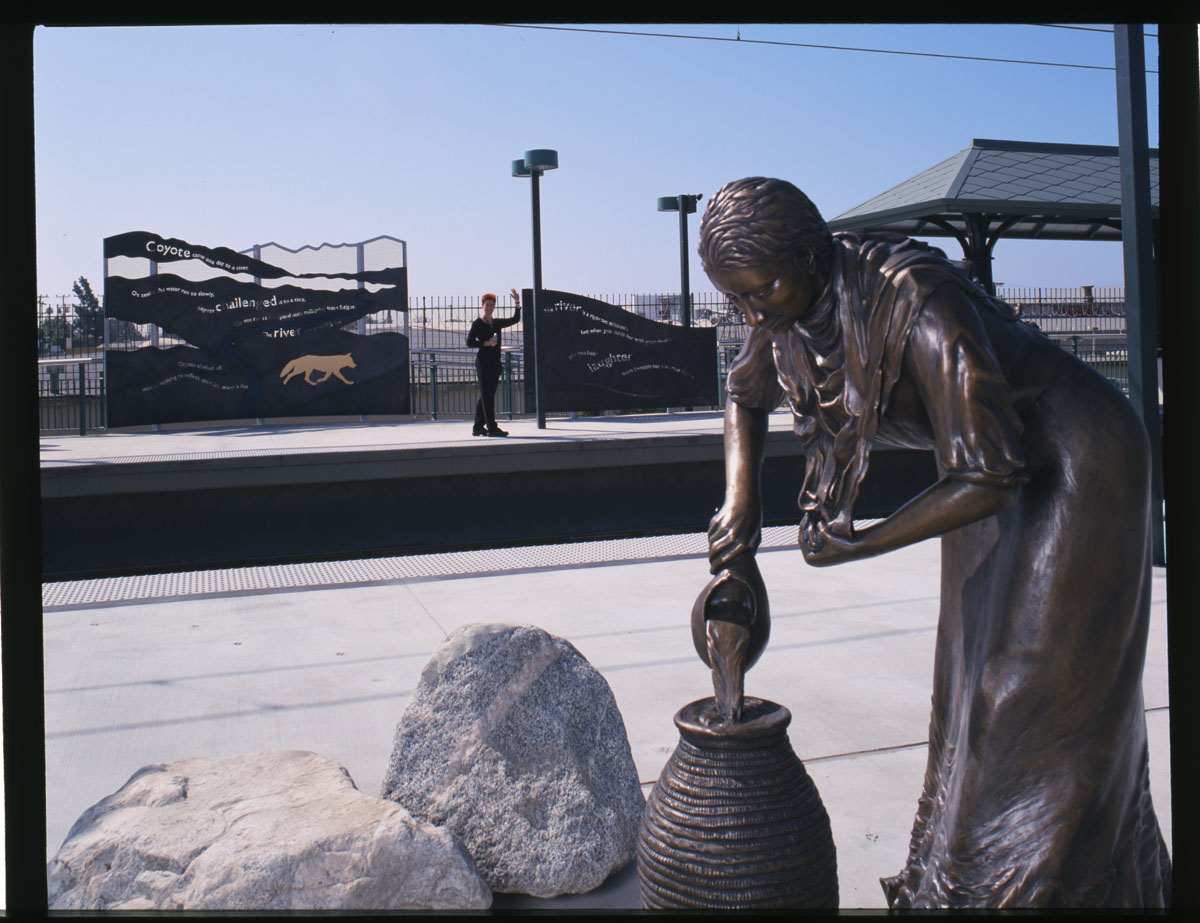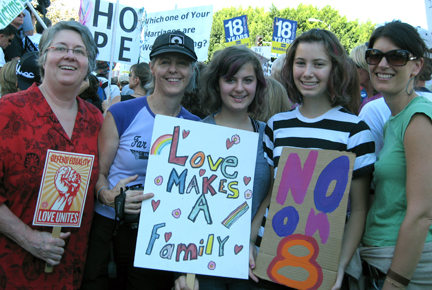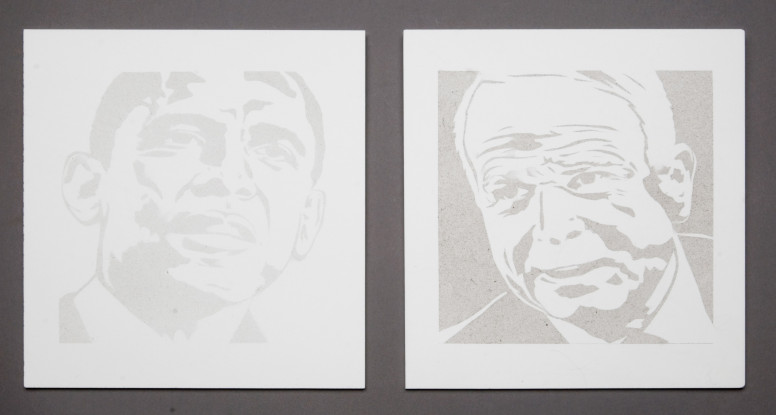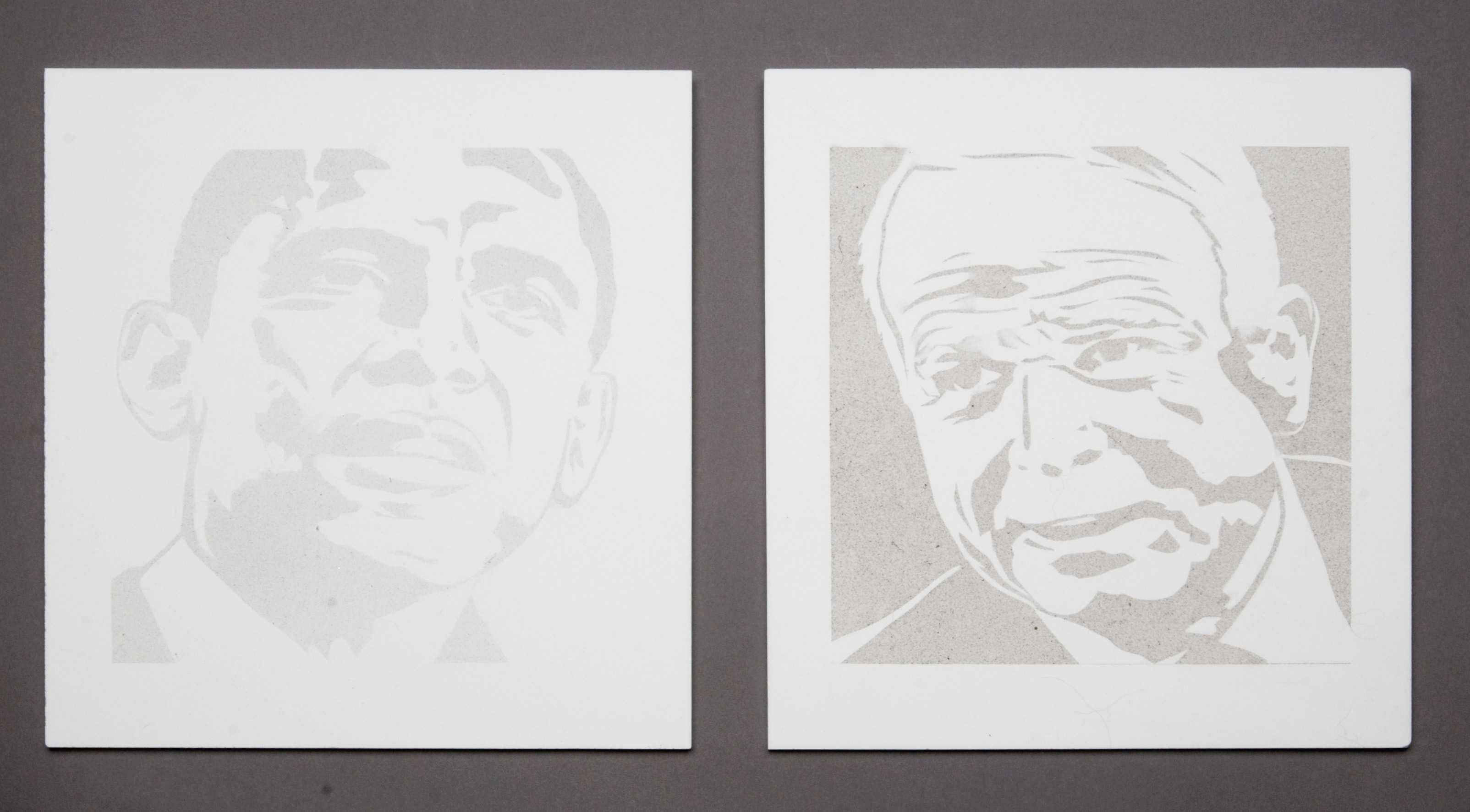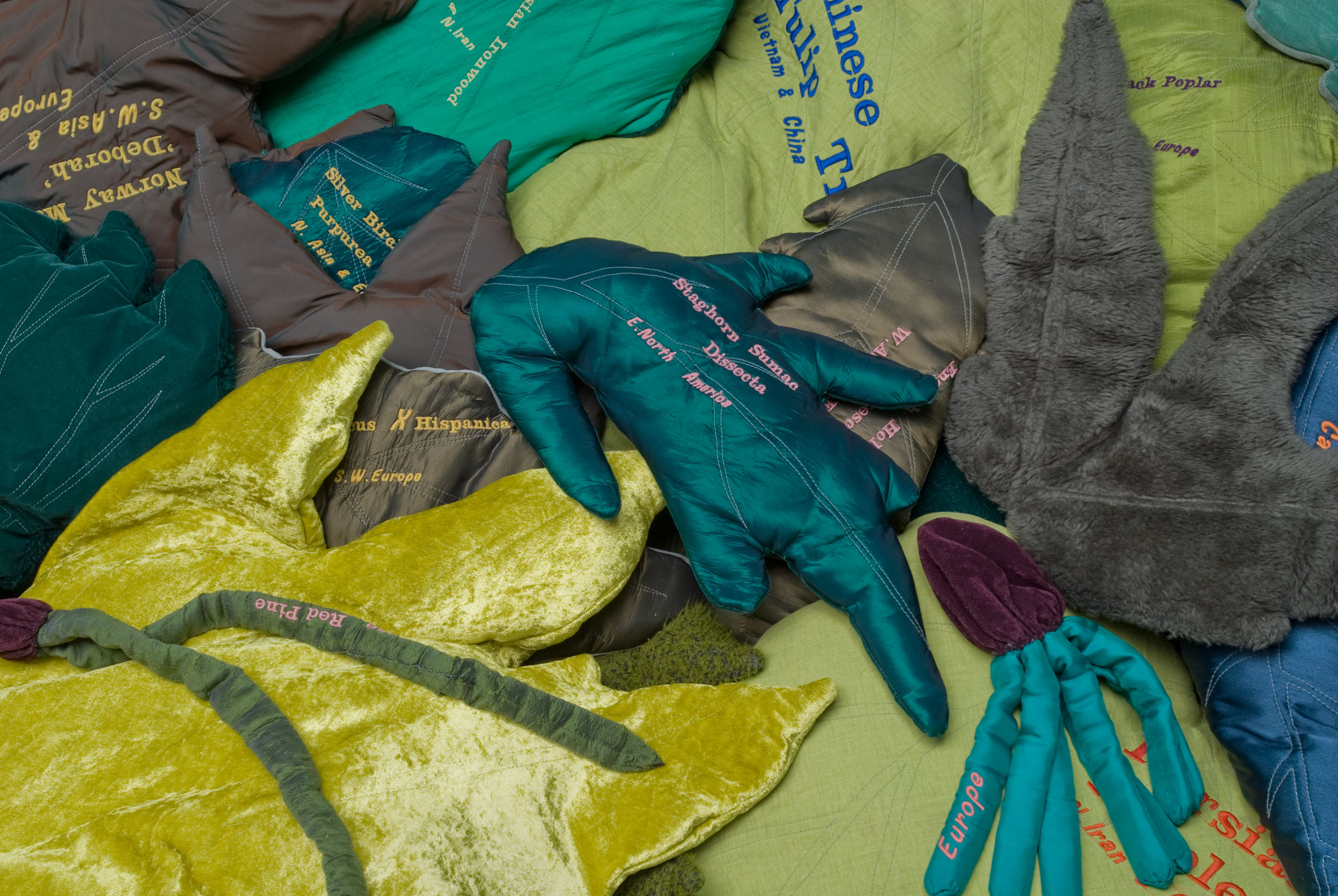 Please join me this coming Saturday evening, Feb. 11, 6-9 pm, for an opening of the exhibition Breaking in Two: Provocative Visions of Motherhood. I got to see much of the show during installation this week and it’s really wonderful. I am exhibiting a new work called Twin Diptych. When I was invited to be a part of this show I knew I wanted to do something in collaboration with my partner, Sue Maberry, and our daughters, Xochi and Marka Maberry-Gaulke. We decided to explore portraiture and got to thinking about how parents pose their children when the kids are little and they have nothing to say about it. We have a portrait of Xochi and Marka as angels and everyone adores it. The truth is that the little darlings were absolutely miserable during the shoot and the photograph represents that one moment when they appeared to be happy. Sue and I decided to photograph them as angels again, but this time give them the opportunity to pose us any way they desired. We got off easy as they decided to pose us as American Gothic by Grant Wood. We chose to mimic William-Adolphe Bouguereau’s angels. Many of you saw a shot from the series on our holiday card. In addition I will be showing the artists’ book, Marriage Matters, and the video by Xochi and Marka called Our Wedding.
Please join me this coming Saturday evening, Feb. 11, 6-9 pm, for an opening of the exhibition Breaking in Two: Provocative Visions of Motherhood. I got to see much of the show during installation this week and it’s really wonderful. I am exhibiting a new work called Twin Diptych. When I was invited to be a part of this show I knew I wanted to do something in collaboration with my partner, Sue Maberry, and our daughters, Xochi and Marka Maberry-Gaulke. We decided to explore portraiture and got to thinking about how parents pose their children when the kids are little and they have nothing to say about it. We have a portrait of Xochi and Marka as angels and everyone adores it. The truth is that the little darlings were absolutely miserable during the shoot and the photograph represents that one moment when they appeared to be happy. Sue and I decided to photograph them as angels again, but this time give them the opportunity to pose us any way they desired. We got off easy as they decided to pose us as American Gothic by Grant Wood. We chose to mimic William-Adolphe Bouguereau’s angels. Many of you saw a shot from the series on our holiday card. In addition I will be showing the artists’ book, Marriage Matters, and the video by Xochi and Marka called Our Wedding.
FOR IMMEDIATE RELEASE
BREAKING IN TWO: PROVOCATIVE VISIONS OF MOTHERHOOD
FEBRUARY 11 – APRIL 14, 2012
(event schedule below)
ARENA 1 A project of Santa Monica Art Studios
3026 Airport Avenue, Santa Monica, CA 90405
Tuesday through Saturday, noon to 6 pm
www.santamonicaartstudios.com
310/ 397-7456
Curated by Bruria Finkel, filmed by Sabine Sighicelli
Contact information: Tel: 310 251 4299, Bruriaart@roadrunner.com
BREAKING IN TWO is the first comprehensive exhibition of work by women artists who are mothers where the work itself integrates the maternal experience, the relationship to the body, the child, the family, and the society at large. The exhibition, which is part of Pacific Standard Time, will feature a multi‐cultural group of four generations of nationally and internationally recognized artist‐mothers selected to represent the multi‐faceted and changing realities of motherhood. The exhibition includes painting, drawing, sculpture, collage and assemblage, installation, photography, film/video, poetry/writing and performance. Curator Bruria Finkel, herself an artist, asserts that “the subject of motherhood was taboo in the art world in the 70s; women artists were advised not to disclose their motherhood status for it might interfere with their ability to progress in the art world.”
PARTICIPATING ARTISTS: Kim Abeles, Lita Albuquerque, Eleanor Antin, Michele Asselin, Jo Ann Callis, Joyce Dallal, Bruria Finkel, Magaret Garcia, Cheri Gaulke, Tierney Gearon, Judithe Hernandez, Channa Horwitz, Katherine Jacobi, Mary Kelly, Margaret Lazzari, Andrea Liss, M. A. M. A., Kim McCarty, MaryLinda Moss, Mother Art, Sandra Mueller, Pearls of Wisdom: End the Violence, Renee Petropoulos, Astrid Preston, Alison, Saar, Betye Saar, Sola Augustsson Saar, Lezley Saar, Reva Santo, Sylvia Sher, Amy Shimshon‐Santo, Elena Mary Siff, Doni Silver Simons, Linda Vallejo, June Wayne, Ruth Weisberg, Miriam Wosk, Kim Yasuda, and Stella Zhang.
EVENT SCHEDULE
February 11, 2012, 5–6 pm VIP opening, 6–9 pm Public opening
February 26, 2012, 12–3 pm Walk-through curator and artists
March 17, 2012, 3–5 pm Mothers on Motherhood: Dance and Spoken Word Performance
March 31, 2012, 2–5 pm Panel discussion, the social and aesthetic implications of Motherhood, a scholarly interaction
April 14, 2012, 6–10 pm Exhibition closing celebration
-Cheri Gaulke

